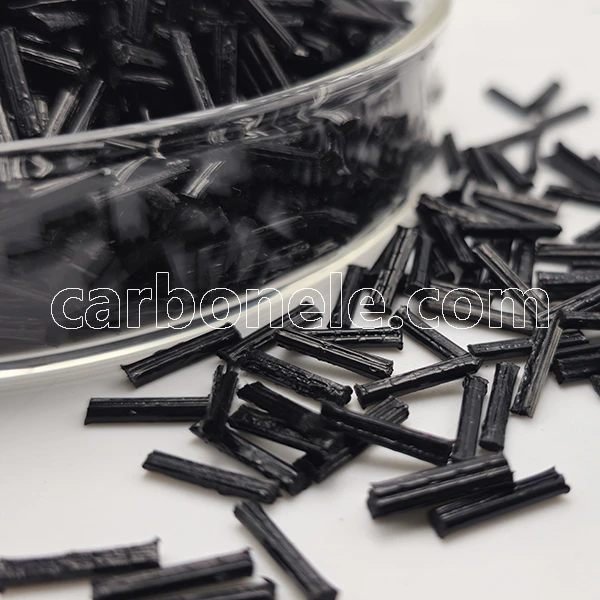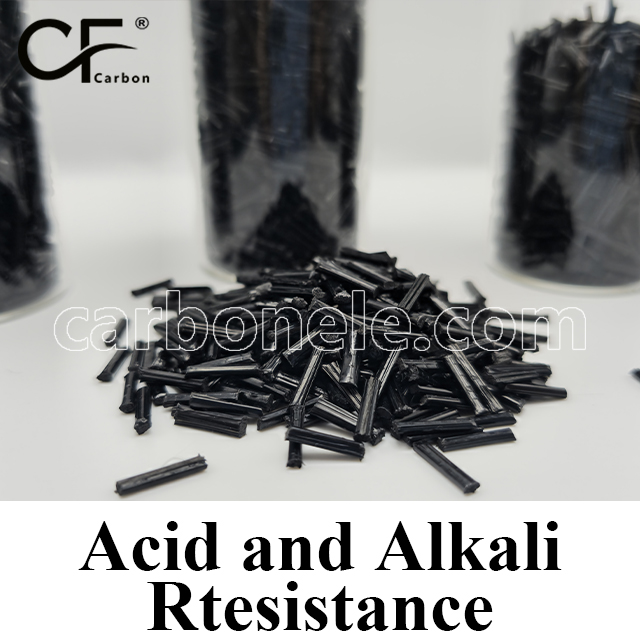
PA12 LCF30 for Drone Fuselages & Wings
PA12 LCF30 compounded by Carbon Xiamen New Material Co., Ltd. has high strength, hardness and toughness. It’s lightweight with good dimensional stability. Resistant to chemicals and heat, suitable for drones and auto parts.
- Manufacturer: Carbon New Material
- OEM/ODM: Acceptable
- Color: Black
- Free Samples: ≤25kgs
- MOQ: 100kgs
- Port: Xiamen
- Model No.: PA12-LCF-BCA3
- CF Type: Long carbon fibers
What do you know about PA12 LCF30?
PA12 LCF30 is a high-performance thermoplastic composite material reinforced by 30% long carbon fiber filling. Its base material is polyamide 12 (PA12), which is a semicrystalline-crystalline thermoplastic material.
As a multifunctional engineering plastic, PA12 is widely used in multiple fields due to its unique physical and chemical properties. It is an ideal material for various molding methods from traditional injection molding to 3D printing and has extraordinary value in fields such as healthcare, automobiles, and industrial piping systems.
Carbon fiber is known for its extremely strong tensile strength. For example, the tensile strength of T800 carbon fiber is as high as an astonishing 5800 MPa. When combined with thermoplastic resin such as PA12, it can effectively enhance the overall mechanical properties of the composite material, endowing it with higher load-bearing capacity and deformation resistance.
Which Performances does PA12 LCF30 Feature?
When PA12 meets carbon fiber, PA12 LCF30% shows many excellent characteristics.
The high strength comes from 30% long carbon fiber filling, which can withstand greater external forces without being damaged. When applied in scenarios with high structural requirements such as drone fuselages, it can effectively resist air flow impacts and accidental collisions. High hardness makes it not easily scratched or worn. The components made from it have good appearance and performance and can extend service life. At the same time, it also has good toughness and can absorb impact energy to prevent brittle fracture.
It has a relatively low density and is a lightweight material, which is of great significance for weight-sensitive fields such as drones. It can reduce the overall weight and improve endurance and flight stability. And it has good dimensional stability. Under different temperature and humidity conditions, the dimensional change is small, ensuring the precision and stability of products and reducing assembly problems and performance impacts.
It has good chemical resistance and can maintain stable performance in various chemical environments and can resist the erosion of substances such as oil, acid, and alkali. It also has relatively high heat resistance and can still maintain its physical and mechanical properties in a certain high-temperature environment, making it suitable for high-temperature working scenarios such as parts around automobile engines.
Wide Application Fields of PA12 LCF30
With these excellent properties, 30%LCF PA12 has broad application prospects in many fields.
In the field of drone manufacturing, taking advantage of its high strength, high hardness, and lightweight characteristics, it can be used to manufacture structural components such as fuselages and wings, ensuring structural strength while reducing weight and improving endurance and flight stability. For example, the material produced by Carbon (Xiamen) New Material Co., Ltd. is applied to industrial drones and can still fly stably and complete complex inspection tasks at a wind speed of 10 meters per second.
In the automotive industry, it can be used for parts such as engine peripherals and automotive piping systems. Its high temperature resistance and chemical corrosion resistance can adapt to the complex environment inside the car.
In the field of electronics and electrical appliances, its good electrical insulation makes it suitable for manufacturing electrical parts, instruments, etc., and its dimensional stability also meets the requirements of precision electronic equipment.
In furniture and lighting, its high hardness and high temperature resistance characteristics can be used to manufacture related components.
In the field of sports equipment, such as high-end bicycle parts, it can improve the durability and performance of equipment.
In practical applications, the specific uses of PA12+LCF30 will be adjusted and optimized according to product requirements and designs. The performance of products from different manufacturers may vary. When using, it is necessary to choose according to actual needs. When processing and handling this material, it is also necessary to follow the corresponding process and technical requirements to fully exert its performance advantages. If you want to know about the PA12 LCF30 products of a specific brand or manufacturer, you can contact the supplier to obtain more detailed technical specifications and application suggestions. Similar products from many manufacturers on the market will have different specific applications depending on product performance and market demand.
If you are looking for this products, please send us an inquiry directly.
Further learn about CFRTPs, please click here.
Classification of Carbon Fiber
The classification of carbon fiber is mainly based on its tensile strength. CF is widely used as a reinforcing material due to its excellent mechanical properties. Therefore, the industry mainly uses tensile strength for classification. Tensile strength refers to the stress at which a material undergoes the maximum uniform plastic deformation, and its unit is MPa. Internationally, the tensile strength of CF is represented by the T value. Common types are T300, T700, T800, T1000, T1100, etc. These classifications reflect different strength levels of CF. Among them, T300 is usually the starting point of civil grades, T700 basically represents the highest civil grade, and CF of T800 and above grades is mainly used in military and space fields.

Frequently Asked Questions
Carbon (Xiamen) New Material Co., Ltd. aims to provide buyers with "one-stop" worry-free high-quality services. Here you can find all information about carbon fiber engineering plastics. If you still have questions, please send us an email for consultation!
-
How can I contact the manufacturer of a product that interests me?
When you find a product you are interested in, you can contact the manufacturer directly by sending an email and we will get back to you as soon as possible.
-
How do I find the products that interest me?
All you need to do is enter the keyword, product name in the search window and press the Enter key on your keyboard. Your search results page will then be displayed. You can also search within the product category pages on the home page. Each category is divided into subcategories, allowing you to refine your search and find products that interest you.
-
Where will I find a buying guide?
Please contact our after-sales service directly and we will provide you with a comprehensive operating guide.
-
What are CF Reinforced Thermoplastic Composites?
CF Reinforced Thermoplastic Composites are materials where carbon fibers are incorporated into a thermoplastic matrix. They combine the strength and stiffness of carbon fibers with the processability and recyclability of thermoplastics. For instance, they are used in automotive parts like bumper beams.
-
What are the benefits of CF Reinforced Thermoplastic Composites over traditional composites?
The key benefits include faster production cycles, easier recyclability, and better impact resistance. They also offer design flexibility. An example is in the manufacturing of consumer electronics casings where complex shapes can be achieved more easily.
-
How are CF Reinforced Thermoplastic Composites processed?
Common processing methods include injection molding, extrusion, and compression molding. Injection molding is widely used for mass production. For example, in the production of small components for the medical industry.
-
What industries use CF Reinforced Thermoplastic Composites?
They are utilized in aerospace, automotive, medical, and sports equipment industries. In aerospace, they can be found in interior components. In the medical field, they might be used in prosthetics.
-
How does the carbon fiber content affect the properties of the composites?
Higher carbon fiber content generally leads to increased strength and stiffness but may reduce ductility. A moderate content is often balanced for specific applications. For example, a higher content might be preferred in structural parts of a race car.
-
What are the challenges in using CF Reinforced Thermoplastic Composites?
Challenges include higher material costs, complex processing equipment requirements, and ensuring uniform fiber dispersion. Issues with adhesion between the fibers and the matrix can also arise. An example is in achieving consistent quality in large-scale production.
























